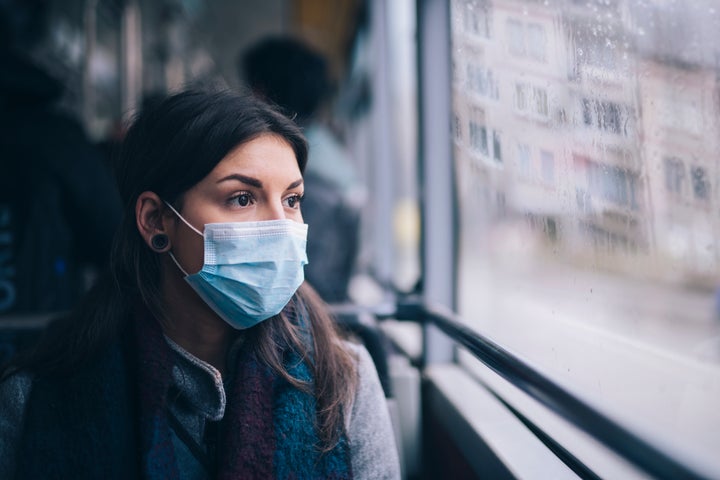Now that we are many months into the coronavirus pandemic, the majority of the public is infinitely more aware of the precautions necessary to help curb the spread of the infectious disease — mask-wearing, social distancing and hand-washing.
And as we near flu season ― which runs from about October to early May every year ― questions around expected flu rates during the pandemic are front of mind for many medical professionals. Hope around reduced flu rates are met with concerns of COVID-19 and influenza co-infection.
Since the pandemic began, the world’s thought process around the spread of infectious diseases has changed, according to Ali Raja, executive vice chair of the Department of Emergency Medicine at Massachusetts General Hospital.
“Specifically, the things that we have done, from wearing masks to hand-washing to physically distancing ourselves to even the cleaning,” Raja said. “Here in Boston, the subway system gets cleaned multiple times a day. Even that as a public health intervention, on top of the individual things like hand-washing and wearing masks, is going to change the flu season for this year — what we don’t know yet is how much.”
As with almost everything with the coronavirus pandemic, there is a level of uncertainty around what to expect from this completely unexpected virus. But there is reason to believe that mask-wearing, along with other precautions, may help lower flu rates this year.
Below, experts shared their thoughts on the impact of COVID-19 mitigation measures on flu rates this fall and winter.

Mask-wearing, and other public health safety methods, are expected to reduce flu rates overall but may vary by region.
Raja said he is hopeful flu rates within the United States will drop as a result of the public health safety measures that we’ve taken to prevent COVID-19. He added that, when looking at flu data in the Southern Hemisphere (where winter started in June), countries have seen a substantial decrease in flu cases because of mask-wearing and other precautions.
However, Raja noted that the U.S. has a unique set of challenges when it comes to virus mitigation.
“We still have to be ready for a typical flu season,” he said. “A lot of the countries that are reporting their flu data going way down actually have much more rigorous and much more universal precautions in place than we do in the U.S. While I’m really hopeful that our flu rates will drop the same way we’ve seen other countries in the Southern Hemisphere drop, I’m worried that, at least in certain parts of the country, we may not see much of a drop at all.”
The local and regional variability within the country in terms of mask requirements and business shutdowns is what makes predicting flu rates for the U.S. challenging, he added.
“I am hopeful for this flu season for us as a country,” Raja said. “I really do think it will be better than flu seasons in the past in terms of infection rates, but it’s going to be very variable.”
Flu rates will only decrease if everything is done properly, especially within schools.
James Cherry, distinguished research professor at the David Geffen School of Medicine at UCLA, stated that children are the reservoir when it comes to influenza. The virus most often spreads from children to adults.
He voiced concern around in-person learning and the risks that school could bring if school systems ― and the students, teachers and staff within the school systems ― do not adhere to all Centers for Disease Control and Prevention guidelines.
“With school reopenings, if they don’t do things right, children could bring the flu home to parents and high-risk people,” he said.
Cherry added that in order for schools to control influenza and COVID-19, students and teachers need to be wearing masks, social distancing and washing their hands frequently.

Get your flu shot to help reduce rates of influenza.
To further reduce the spread and risk of the flu, Raja encourages the public to get the flu shot. There are many uncertainties associated with the coronavirus and its emergence during flu season, including the risk of co-infection.
“We don’t know what co-infection with COVID and the flu is going to look like. I’m worried patients may end up more sick than either disease alone,” Raja said.
Protecting yourself, and those around you, from the flu will also only help protect other members of society, which is crucial as COVID-19 continues to increasingly impact Black and Latino communities.
“We already know COVID has really hit disproportionately our communities of color and places that do not have very robust healthcare systems in place,” Raja said. “And if we don’t ramp up flu vaccinations and other preventative measures, then those communities are going to get hit even harder.”
- What should you still be disinfecting to prevent COVID-19?
- Is it possible you had coronavirus earlier this year?
- How can you manage your anxiety as coronavirus restrictions lift?
- Here’s the latest on how long COVID-19 antibodies last.
- How will COVID-19 change your office?
- Laid off and lost your health insurance? You have options.
- Everything you need to know about face masks right now.
- Find all our coronavirus coverage here.